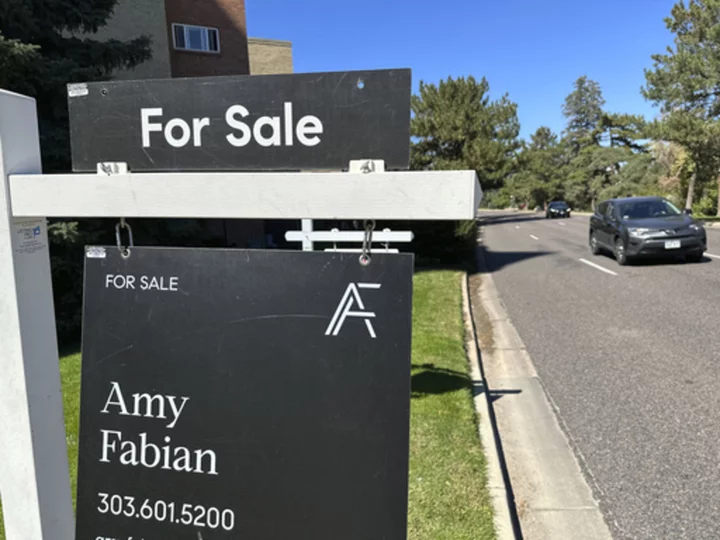LOS ANGELES (AP) — Home loan borrowing costs rose for the fifth straight week, keeping the average long-term U.S. mortgage rate at its highest level in more than two decades and taking another bite out of prospective homebuyers' purchasing power.
The average rate on the benchmark 30-year home loan rose to 7.57% from 7.49% last week, mortgage buyer Freddie Mac said Thursday. A year ago, the rate averaged 6.92%.
Borrowing costs on 15-year fixed-rate mortgages, popular with homeowners refinancing their home loan, also increased. The average rate rose to 6.89% from 6.78% last week. A year ago, it averaged 6.09%, Freddie Mac said.
High rates can add hundreds of dollars a month in costs for borrowers, limiting how much they can afford in a market already out of reach for many Americans. They also discourage homeowners who locked in rock-bottom rates two years ago from selling. The average rate on a 30-year mortgage is now more than double what it was two years ago, when it was just 3.05%.
The average rate on a 30-year home loan climbed above 6% in September 2022 and has remained above that threshold since. This marks the first 12-month period that the benchmark mortgage rate has been at 6% or higher since the early 2000s. It's now at the highest level since Dec. 1, 2000, when it averaged 7.65%.
The elevated rates combined with a near-historic low level of homes for sale nationally has worsened homebuyers' affordability crunch by keeping home prices near all-time highs even as sales of previously occupied U.S. homes have fallen 21% through the first eight months of this year versus the same stretch in 2022.
“Though buyers have shown signs of adjusting to the higher-rate environment, limited inventory has kept home prices elevated, cutting further into the buying power of shoppers hoping to find a suitable home,” said Hannah Jones, senior economic research analyst at Realtor.com.
Home loan purchase applications have fallen to multi-decade lows and are now nearly 20% below last year's pace, according to the Mortgage Bankers Association. However, there's been a pickup in applications for adjustable-rate mortgages.
"With mortgage rates well above 7%, some prospective homebuyers are turning to ARMs to lower their monthly payment in the short term amidst these high mortgage rates,” said Bob Broeksmit, the MBA's CEO.
Mortgage rates have been climbing along with the 10-year Treasury yield, which lenders use as a guide to pricing loans. Investors’ expectations for future inflation, global demand for U.S. Treasurys and what the Fed does with interest rates can influence rates on home loans.
The central bank has already pulled its main interest rate to the highest level since 2001 in hopes of extinguishing high inflation, and it indicated last month it may cut rates by less next year than earlier expected.
The threat of higher rates for longer pushed Treasury yields last week to their highest levels in more than a decade. The 10-year Treasury yield was at 4.65% in midday trading Thursday. It was at roughly 3.50% in May and just 0.50% early in the pandemic.

